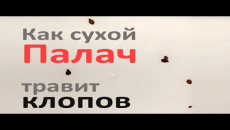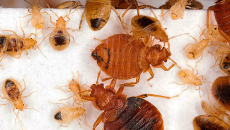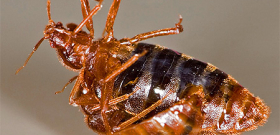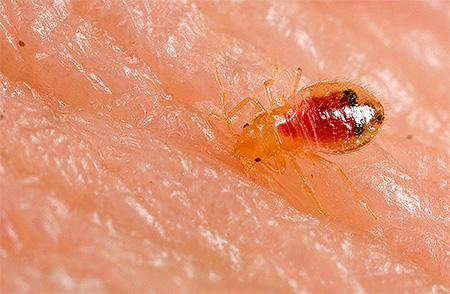
Bed bugs are one of the best known insects with incomplete metamorphosis. This means that in its development, each individual of bedbugs does not go through such complex transformations as are characteristic of butterflies or beetles. Bedbug larvae outwardly represent miniature copies of adult insects, although some features of their structure, in addition to body size, still clearly demonstrate their juvenility.
An inexperienced resident of a big city, often not knowing what a bug larva looks like, can easily confuse a young insect with other guests of the home: ants, small cockroaches, lice. But at the same time, the presence of bed parasite larvae in a house, hotel or country house means the presence of a whole population of insects here that will ruin life and will not let you sleep peacefully. Therefore, knowing how they look is worth at least so that at the first meeting with them in time to start taking measures to protect your home from uninvited guests.
The appearance of the larvae of domestic bugs
The larvae of domestic bugs are outwardly similar to adults and have a flattened body from above. The length of their body ranges from 0.5 to 2 millimeters, and the color varies from light yellow, almost white (in the youngest), to the usual brown inherent in adult insects (in larvae before the last molt).
In entomology, it is customary to call larvae such age forms of insects that differ significantly from adults. For example, butterfly or fly larvae are so-called typical. Such insects are classified as insects with complete metamorphosis. In addition to flies, mosquitoes and butterflies, they include beetles, riders, ants and bees, and some other orders.
Bedbugs belong to the group of insects with incomplete transformation. In them, the larva emerging from the eggs has a body structure similar to that of an adult insect, differing only in some details and inability to reproduce. Such a larva is called a nymph.
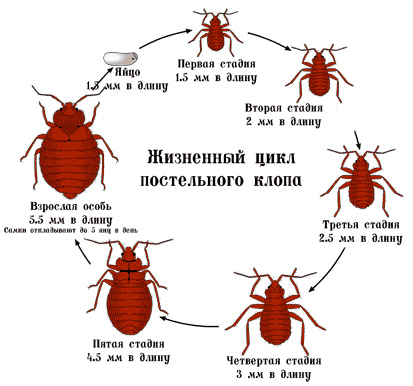
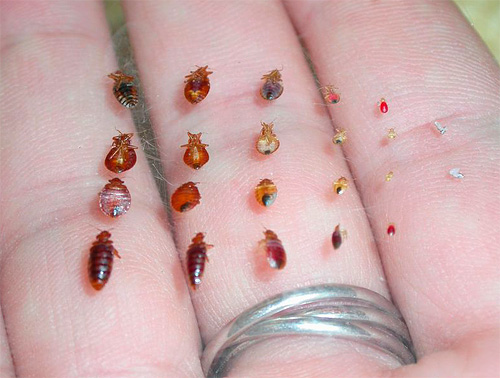
As it develops, it grows out of its hard shell and is therefore forced to constantly molt. The nymph molts 5 times, after the last molt, turning into an adult insect. The development of an insect from leaving the egg to becoming an adult lasts from 4 to 6 weeks, depending on the temperature in the room. The higher the temperature, the faster the whole cycle.
Bed bug larvae have a more elongated body than adult insects. Outwardly, they are easy to confuse with a cockroach nymph. For larvae of the first age, the absence of a dark color of the abdomen (back of the body) is characteristic, while nymphs of later instars have a general light-red color of the head, legs and border of the body, and a dark middle of the abdomen. However, the saturation of the color of this dark part of their body depends primarily on the time that has passed since the last feeding: in a hungry larva, the entire abdomen is light. In the flash photo of a bed bug larva, the stomach itself filled with blood and the organs adjacent to it are clearly visible.
Differences between bedbug larvae and other arthropods
A person inexperienced in entomology may confuse a bed bug larva with some other unwanted house guests.
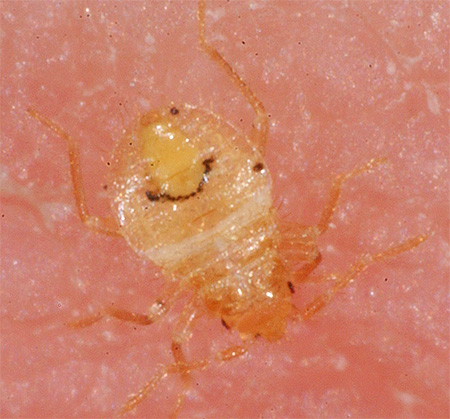
But looking closely, or comparing the bug larva with a photo of other arthropods, it is possible to reliably establish its species identity by certain signs:
- from the nymphs of cockroaches, the larvae of bedbugs differ in a lighter color and less mobility. In addition, the nymphs of the most common red cockroaches in apartments have a well-defined light spot on the cephalothorax. The larvae of bedbugs do not have such a pattern;
- from adult cockroaches, older larvae of bedbugs differ in small sizes (no more than 2 mm, while an adult red cockroach reaches a length of 10-15 mm) and the absence of wings;
- from domestic ants, bedbug larvae are easily distinguished by the shape of the body: upon careful examination, the absence of a “waist” between the abdomen and cephalothorax and, in general, a wider body immediately becomes noticeable;
- from ticks, which are only occasionally brought into the house, the larva of the bed bug differs in the number of legs: it has six of them, and the tick has eight;
- only the smallest larvae of bed bugs can be confused with fleas. But if the flea is difficult to catch because of its jumping ability, then the bug nymphs are very slow. In addition, the fleas are dark brown in color, and the appropriately sized bed bug larvae are almost transparent.
And further: We caught bedbugs and tested the effect of GEKTOR powder on them - a pretty killer thing turned out to be ...
The universal difference between the larvae of domestic bugs is their preferred habitats.If cockroaches live mainly near food supplies, ants live behind baseboards and under floor coverings, fleas live on pet hair, then bedbug nymphs prefer completely different places. In this they differ from lice: the latter stay only on the hairy parts of the body, while the bugs avoid them.
Food and typical habitats of bedbug larvae
Due to the low speed of movement, bedbug larvae cannot move long distances from their main food sources. Therefore, they are found in greatest quantities where people rest: under mattresses, inside them, in the folds of a bed or furniture upholstery, in close proximity to beds on the floor and under baseboards. It is important that in places where adult insects hide, their larvae are found with them: adults do not show any hostility towards them.
By the way, having once found a place of accumulation of parasites, it is very easy to understand the difference between adult insects and larvae, even without knowing what bug larvae or eggs look like. In places of such accumulations, large quantities of white eggs, black excrement, and chitinous shells remaining after insect molting are usually found.
The larvae of domestic bugs feed, like adult insects, on human blood. It is believed that small nymphs leave much less painful bite marks on the body than adult insects. But they can also spoil sleep and give a lot of unpleasant sensations.
Where to look for bedbug larvae and how to deal with them?
Measures to combat bed bug larvae are no different from those for adults.
And further: Well, what can I say - Get Total picked bedbugs for 2.5 hours, but still did its job ...
Before you start the fight, you need to find out if the bugs are the cause of the bites that appear on the body. Let's look at the characteristic signs of bed bug bites:
- a large number of them after every night. Not only are bedbugs usually present in large numbers indoors, each of them makes several bites in different places in one feeding;
- clearly visible "routes" of movement of each feeding larva. Usually this movement is like a small line of 4-5 bites;
- itching in the places of the bites themselves, their redness.
It is difficult to notice the bedbug nymph directly at the time of feeding: it feeds at night, usually in the pre-morning time, which coincides with the phase of the most sound sleep of a person. If itching and pain are felt at the time of the bite, then it is the larva that bites: they do not have enough secretion in saliva to provide pain relief for the bite. After the bite of an adult bug, itching begins to be felt after a few hours.
Bedbug nymphs are even less than adults, resistant to extreme temperatures for them. Freezing an apartment, house or cottage in winter in the northern regions for 2-3 days with a temperature of about -20 ° C ensures the death of almost all bug larvae in the room. Treatment of the room with dry heat gives a result in any room, however, individual individuals in this case can remain inside mattresses or on clothes.
Very effective means of controlling bedbugs are various chemical insecticides: dichlorvos, karbofos, various pyrethroids. However, they are toxic not only for insects, but also for people, and when treating the premises with them, all precautions must be observed, and if possible, do not stay indoors for several days during which the treatment lasts.
It is important to understand that all chemical means of protection against parasitic insects are designed primarily for their destruction. Bedbugs are very difficult to scare away with different smells, and if they are hungry, then it is completely impossible. Therefore, the use of most folk remedies for repelling bed bugs usually gives only a short-term result.
After the use of insecticides and the death of bedbugs, a new population of the youngest larvae may appear in the dwelling in a few days. They are hatched from eggs laid before disinfestation, and the fight against them requires a repeat of the procedure.
The photo below shows the eggs and larvae of the bed bug:

However, after such a repeated disinfestation, the likelihood of the reappearance of bedbugs in the apartment depends only on the infestation of the neighbors' apartments with them. In multi-apartment buildings, it is most useful to carry out a coordinated mass disinfestation of several (ideally all) apartments at once.
In order to protect your home from the penetration of bedbugs, you must first of all not visit places where these parasites can be: cheap hotels, houses in which hygiene is not maintained. You should not invite people to your house, in whose house bugs obviously live. One or two individuals, once on clothes, will easily move to a new home and give rise to a new population. In addition, you should regularly carry out wet cleaning in the house, check the condition of beds and sofas, wash and shake out the bed.
You can keep birch brooms and bouquets of dry tansy in the house, which to a certain extent repel bedbugs and can prevent their movement from neighbors.
The exit of the larvae of the bug from the egg






